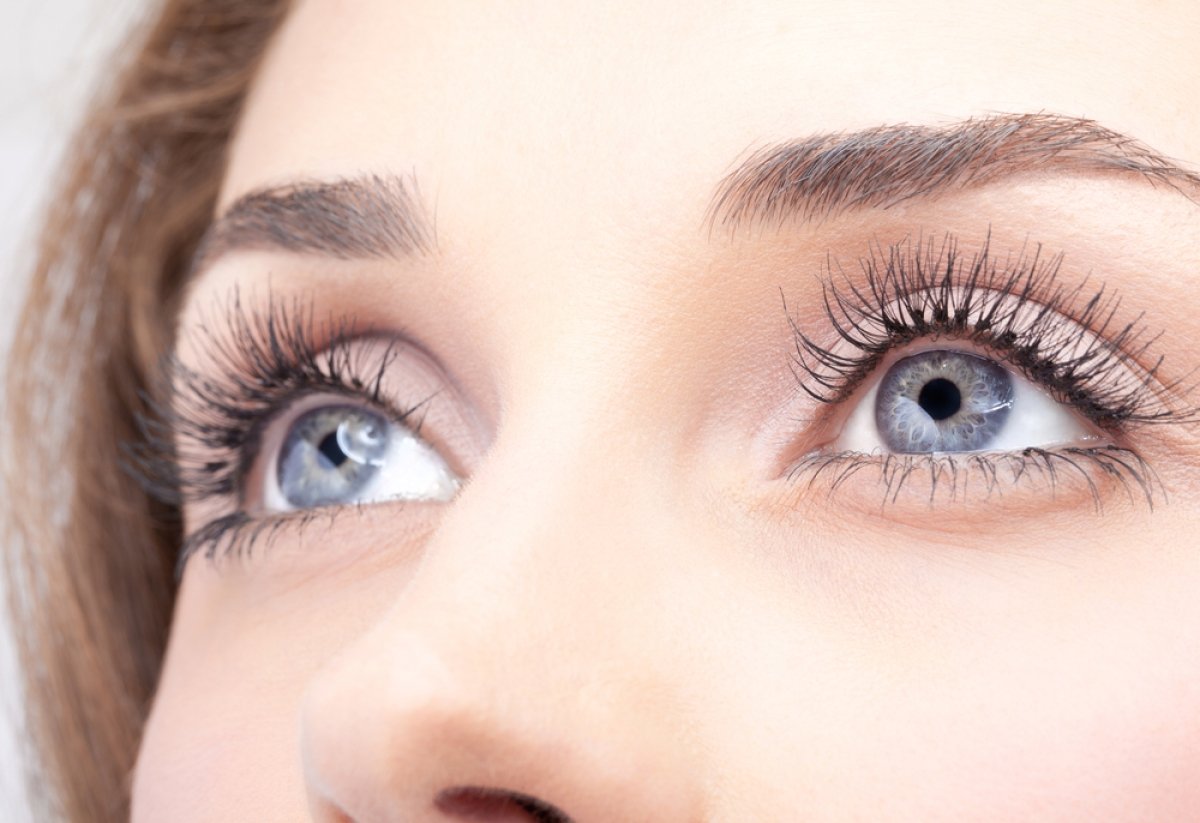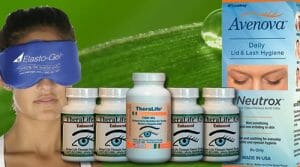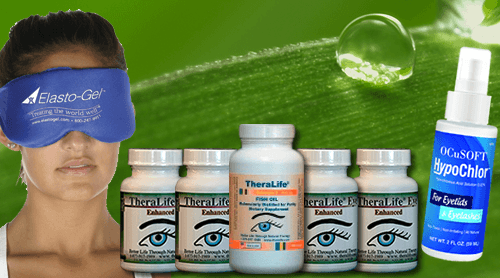TheraLife’s products provide a comprehensive approach to managing and treating watery eyes and related conditions. Their formulas target the underlying causes of eye discomfort, such as inflammation and dryness, by enhancing tear production and quality. TheraLife’s natural supplements, like Eye Enhanced, are designed to improve eye health by supporting the body’s natural healing processes. These products are particularly beneficial for conditions like blepharitis, uveitis, and Sjogren’s syndrome, offering an alternative to traditional treatments. By incorporating anti-inflammatory ingredients and promoting a balanced diet rich in omega-3 fatty acids, TheraLife helps maintain ocular moisture and overall eye health. Additionally, their resources guide customers on lifestyle changes and home remedies that complement their product use, ensuring a holistic approach to eye care. To explore how TheraLife can benefit your specific condition, consider their tailored products and educational materials that align with your needs and lifestyle.
Powerful Watery Eyes Relief – TheraLife
Treat dry eyes to stop watery eyes. TheraLife Oral Dry Eye Treatment Works.
Add To Cart
Key Takeaways
- Apply cold teabags to eyes to reduce inflammation and provide comfort due to antioxidants.
- Use over-the-counter eye drops like antihistamine drops to alleviate itchiness and dryness.
- Practice good hygiene to prevent eye infections and reduce watery eye symptoms.
- Maintain hydration for tear production and moisture, aiming for 8-10 glasses of water daily.
- Consult healthcare providers if symptoms persist for tailored advice and treatment options.
Powerful Watery Eyes Relief – TheraLife
Treat dry eyes to stop watery eyes. TheraLife Oral Dry Eye Treatment Works.
Warm Compress Technique
When dealing with watery eyes, one effective remedy to contemplate is the warm compress technique.
Begin by selecting a clean, soft washcloth, like flannel, which retains heat well. Submerge it in warm (not hot) water and wring it out thoroughly.
Applying the warm compress over your closed eyelids can enhance eye relaxation by soothing muscle spasms and reducing inflammation. This method effectively unblocks oils from the meibomian glands, enhancing tear quality and alleviating discomfort. Regular application of a warm compress can also help prevent clogging of oil glands, reducing issues such as blepharitis, styes, and chalazia. It is essential to monitor for irritation or signs of infection after applying a warm compress to ensure proper healing and avoid complications.
To guarantee safety, always test the compress temperature before application and use separate materials if both eyes are affected. Avoid any additives in the water to prevent irritation.
Regular use can lead to noticeable improvements in moisture and comfort for your eyes.
Saline Solution Benefits
When considering home remedies for watery eyes, it’s important to recognize that saline solution can aid in eye care, but it doesn’t treat infections directly. While saline effectively flushes out irritants and maintains a sterile environment, it lacks antimicrobial properties necessary to combat infection-causing pathogens. Saline rinses are effective for contact lens cleaning, ensuring they remain free from debris and irritants. To enhance eye health further, consider TheraLife products that aim to improve tear production and reduce inflammation as part of comprehensive dry eye management. Always consult with an eye care professional to determine the appropriate use of saline for your specific eye condition.
Treating Eye Infections
Although eye infections can be uncomfortable, using a saline solution can offer significant relief. Saline solutions flush out irritants, reducing eye symptoms associated with infections. They help with infection prevention by removing allergens like pollen and particles. The sodium chloride and buffering agents in saline mimic natural tears, easing irritation and burning sensations. When dealing with eye infections, saline solutions provide:
- Relief from stinging or burning
- Removal of allergy-causing materials
- A method for cleaning contact lenses safely
- A means to flush out minor irritants
For persistent symptoms, it is crucial to consult with an eye doctor to rule out any underlying conditions. Always use sterile solutions to avoid contamination, and follow product instructions closely. If you’re making a homemade saline solution, ascertain it’s prepared hygienically. It is important to note that if you are dealing with a chemical burn, immediate rinsing with water is critical before reaching the ER. For serious concerns, seek professional medical attention to guarantee proper care.
Antimicrobial Properties Explained
Saline solutions, particularly hypertonic ones, exhibit remarkable antimicrobial properties that are both practical and beneficial for various applications. By utilizing a high saline concentration, these solutions create an environment of elevated osmotic pressure, which is essential in inhibiting bacterial growth. In studies, hypertonic saline demonstrated the ability to significantly reduce bacterial counts in pathogens like Pseudomonas and Escherichia coli, showcasing its potential as an effective non-antibiotic treatment option. They effectively reduce bacterial counts, especially in pathogens such as Pseudomonas and Escherichia coli. Hypertonic saline disrupts bacterial biofilms, enhancing the efficacy of antibiotics like gentamicin. This is particularly important because biofilms protect bacteria, making infections challenging to treat. You can use saline solutions for nasal irrigation, wound cleaning, and contact lens care, as they reduce microbial contamination without relying on antibiotics. In doing so, they provide a gentle and cost-effective means of maintaining hygiene and preventing infection. Additionally, products like TheraLife Eye capsules are designed to restore natural tear production, offering relief for conditions such as chronic dry eyes.
Cold Teabags Application
Applying cold teabags is a simple yet effective remedy for alleviating watery eyes. The cooling benefits of teabags reduce inflammation and soothe irritation. When choosing your tea, consider green tea for its potent anti-inflammatory properties. Cold teabags can also help open clogged meibomian glands, which improves oil flow and assists in tear release. Brew the teabags, cool them, and remove excess water before application. This method facilitates tear release, which is particularly beneficial for evaporative dry eye symptoms.
- Experience relief: The cooling sensation offers immediate comfort.
- Reduce inflammation: Antioxidants in tea calm redness and swelling.
- Enhance tear production: Especially helpful during extended screen exposure.
- Prevent infection: Use separate bags for each eye.
Implementing this remedy can also contribute to a diminished quality of life improvement, as dry eyes often lead to discomfort that affects daily activities. Ensure hands are clean, and avoid using hot bags to prevent burns. Regular application can markedly improve eye comfort and health.
Over-the-Counter Eye Drops
Have you ever wondered how over-the-counter (OTC) eye drops can help manage watery eyes? Various eye drop types offer specific relief tailored to your symptoms. Antihistamine drops can alleviate itchiness but require adherence to usage guidelines. Lubricating eye drops provide moisture, ideal for persistent dryness. Mast cell stabilizers block histamine, easing allergy symptoms but may require frequent application. Preservative-free eye drops are crucial for reducing ocular surface irritation and inflammation, enhancing patient comfort and satisfaction. VISINE® Allergy Eye Relief, which combines an antihistamine and a redness reliever, provides fast-acting relief within minutes.
Here’s a quick comparison:
| Eye Drop Type | Key Ingredient | Usage Guidelines |
|---|---|---|
| Antihistamine | Naphazoline HCL | Up to 4 times daily for ages 6+ |
| Lubricating | Preservative-free options | Use several times daily as needed |
| Mast Cell Stabilizer | Azelastine hydrochloride | Use for quick relief; frequent dosing |
Always consider potential side effects and consult a healthcare provider if symptoms persist.
Importance of Hygiene Habits
While maintaining proper hygiene might seem mundane, it’s a fundamental aspect of preventing watery eyes. Effective hand washing is paramount, reducing the transmission of germs that can lead to eye infections. Make sure you wash your hands with soap and water after using the toilet, before meals, and after contact with pets. Additionally, understanding the specific triggers of watery eyes can help tailor hygiene practices to individual needs, further preventing symptoms. Body hygiene is equally essential. Regular bathing removes bacteria that could cause infections, including those affecting your eyes. Wearing protective eyewear can also help shield your eyes from irritants like wind and dust, reducing the risk of excessive tearing. By adhering to hygiene best practices, you greatly lower infection risks.
- Feel empowered: Boost your confidence with clean hands and body.
- Prioritize health: Minimize the risk of eye infections and respiratory issues.
- Stay connected: Avoid social isolation due to poor hygiene-related odors.
- Protect loved ones: Reduce germ spread, keeping your family safe.
Omega-3 and Diet Adjustments
Incorporating omega-3 fatty acids into your diet can greatly benefit your eye health. Omega-3 sources like fatty fish (mackerel, salmon), seeds, and nuts (flax seeds, walnuts) enhance tear quality and reduce dry eye symptoms by improving the eye’s oil film. Omega-3 fatty acids are essential for overall health, but our bodies cannot produce them independently. These fatty acids also decrease dry eye risk by 17%, with DHA specifically preventing age-related vision loss. However, achieving the right dietary balance is essential; maintaining an ideal omega-3 to omega-6 ratio supports overall ocular health. Plant-based omega-3s, such as ALA, have low conversion rates to EPA and DHA, making them less effective for dry eye treatment. Supplements, particularly those in triglyceride form, can help achieve the necessary intake without mercury concerns. The recommended daily dosage for adults is 250-500 mg of EPA and DHA, emphasizing the need to consult your doctor for personalized advice.
Staying Hydrated and Humidified
Ensuring your eyes remain hydrated and humidified is essential for maintaining ideal eye health and preventing discomfort. Employ effective hydration techniques to support tear film balance and avoid dry eyes, which can paradoxically lead to excessive tearing. Adequate hydration supports tear production, maintaining eye surface moisture, which is crucial for preventing discomfort and irritation. Aim for 8-10 glasses of water daily and incorporate hydrating foods like watermelon. To manage humidity levels, use a humidifier set between 40-60%, especially in dry climates or air-conditioned environments. Maintaining proper hydration can also help in preventing conditions like blepharitis, which is often associated with chronic dry eyes.
Regular hydration and proper humidity levels alleviate dry eye symptoms and reduce risks of conditions like glaucoma.
- Feel rejuvenated: Proper hydration techniques can prevent dry, itchy eyes.
- Protect your vision: Balanced humidity levels contribute to eye health.
- Achieve comfort: Thorough hydration and humidification reduce discomfort.
- Be proactive: Consistent practices can prevent watery eyes.
Sunglasses and Protective Measures
Sunglasses and protective measures play an essential role in managing watery eyes effectively. By using sunglasses with UV protection, you shield your eyes from harmful sunlight and UV rays, reducing tear production from irritation. Polarized lenses offer additional sunglasses benefits by minimizing glare, which can exacerbate eye discomfort. In windy or snowy environments, wrap-around goggles serve as protective eyewear, preventing cold air from triggering excessive tearing. Regularly wearing wrap-around glasses outdoors can also protect against wind irritation. If you’re in dusty settings, dustproof goggles are important for keeping debris from irritating your eyes. Sunglasses with 100% UV protection are crucial for maintaining eye health and preventing further discomfort for sensitive eyes. Regularly cleaning your sunglasses and goggles is necessary to avoid allergen buildup. Additionally, steer clear of smoke and other environmental irritants like pollen and chemicals by using air purifiers and hypoallergenic products to maintain ocular comfort.
Powerful Watery Eyes Relief – TheraLife
Treat dry eyes to stop watery eyes. TheraLife Oral Dry Eye Treatment Works.
Frequently Asked Questions
Can Allergies Cause Watery Eyes?
Yes, allergies can cause watery eyes. When you’re exposed to allergy triggers like pollen, dust, or pet dander, your body reacts with allergy symptoms, including excessive tearing.
The allergens irritate your eyes, leading to a watery discharge as your body attempts to flush out the irritants.
Managing these symptoms involves identifying your specific triggers and using treatments like antihistamines or artificial tears to provide relief and improve your comfort.
What Are Symptoms of Blocked Tear Ducts?
Imagine your eyes are like a busy highway, and a blocked tear duct is a major traffic jam.
You’ll notice symptoms like excessive tearing, redness, and crusting around your eyelids. Discharge, blurred vision, and sensitivity to light can accompany this congestion.
In babies, look for swelling and sticky discharge. If there’s constant tearing or repeated infections, it’s essential to address these blocked tear duct symptoms to prevent further complications.
How Does Aging Affect Tear Production?
As you age, the aging process impacts your tear production considerably. The lacrimal glands produce fewer tears, altering tear composition and stability.
This shift in tear film can lead to quicker evaporation, resulting in dry eyes. Hormonal changes, especially reduced estrogen levels in postmenopausal women, further degrade tear quality.
Aging can also cause eyelid laxity, affecting tear distribution, and underlying conditions like diabetes may exacerbate these issues, causing discomfort.
Are There Specific Foods That Help Reduce Eye Inflammation?
You can improve eye health by incorporating anti-inflammatory foods into your diet.
Foods rich in lutein and zeaxanthin, like kale and spinach, protect your eyes from damage.
Oranges and citrus fruits offer vitamin C, reducing the risk of cataracts.
Omega-3 fatty acids from salmon and walnuts support retinal health.
Consuming a variety of these foods, supported by evidence-based research, contributes to reducing eye inflammation and maintaining overall eye health.
When Should I See a Doctor for Watery Eyes?
You should see a doctor for watery eyes when symptoms persist despite removing potential eye strain or environmental irritants.
If you experience unexplained redness, pain, or vision changes, it’s essential to seek medical advice.
Persistent issues might indicate underlying conditions such as infections or blocked tear ducts.
Immediate attention is necessary for severe symptoms like eye discharge or if over-the-counter solutions fail to provide relief.
An evidence-based evaluation guarantees appropriate care.
Powerful Watery Eyes Relief – TheraLife
Treat dry eyes to stop watery eyes. TheraLife Oral Dry Eye Treatment Works.
Conclusion
Theralife.com offers a range of products specifically designed to benefit those struggling with various eye conditions, providing relief and improvement in eye health. For individuals dealing with watery eyes, Theralife’s comprehensive solutions, such as their Eye Enhanced formula, are crafted to address the root causes of symptoms, including inflammation and dryness. Their products are backed by natural ingredients and scientific research, ensuring they are both effective and safe for long-term use.
Furthermore, Theralife emphasizes the importance of a holistic approach to eye care by integrating dietary recommendations and lifestyle changes. They provide guidance on adopting an anti-inflammatory diet and maintaining proper hydration, which are crucial for managing eye conditions like blepharitis and dry eyes. Their dedicated resources also offer insights into protective measures, such as the use of sunglasses and maintaining hygiene practices, to prevent and alleviate symptoms.
By choosing Theralife’s products, customers benefit from a tailored approach that empowers them to manage their eye health confidently and improve their overall quality of life.





